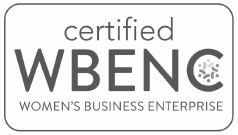For many nonprofits, late spring and early summer are characterized by signature fundraising events such as galas and golf tournaments. Flawlessly executing events of this magnitude – and proving their ROI – requires a strategic marketing and development strategy that is keenly focused on the bottom line.
Events Are About Much More Than One Day of In-Person Networking with Stakeholders
Many nonprofits start planning the next year’s signature fundraising event the day after this year’s event ends. This speaks to the mere scope of executing a successful event in and of itself.
For nonprofits, successful events are about much more than the number of attendees. They are about what comes from those stakeholders in the months that follow. This requires an event to be part of a larger marketing and fundraising strategy that includes multiple touchpoints throughout the year. While the right blend of activities is unique to every organization, representative activities may include email and social media marketing, face-to-face meetings with key donors, program visits for funders and smaller-scale events such as donor recognition events and those celebrating program milestones and/or expansions.
Some Events May Not be Sustainable
It takes a tremendous amount of internal and external resources to execute a signature event. To that end, it is critical to know if your event is generating ROI. Depending upon your organization’s mission and its event marketing goals, ROI may be defined by more than just funds raised. ROI may be defined by new donor acquisition, Board engagement and attendance, in-kind partnerships secured and other outputs.
If you find the time and resources your nonprofit is investing in one or more of its events is yielding a negative return, focus on identifying other opportunities to engage that event’s stakeholders – be it sponsors or volunteers – while generating a positive return.
Standing Out From the Crowd is Critical
As I mentioned early on, there is often a shared seasonality among nonprofit events. This seasonality is best understood by putting yourself in your donor’s shoes. If you were to receive invitations to multiple galas or golf tournaments during the same season, or even month, how would you decide which to support? While affinity for a given cause may have some influence, the experiences attendees will have if they choose to attend your event is also an important deciding factor. It is your organization’s job to tease and sell this experience leading up to a big event.
Events Aren’t the Only Time You Should See Your Major Donors During the Year
Donor engagement should run on a continuous cycle. I don’t mean you should be constantly soliciting donations. Every donor – private, foundation, corporate, to name a few – has reasons each chooses to support your cause. It is imperative to know what makes your donors tick and communicate to them how you are upholding that specific part of your mission. You also need to draw the connection between their individual donation and your organization’s impact.
Whether you do this through personal phone calls and emails, meet them for coffee, have program participants pen them hand-written ‘thank you’ notes or invite them for a private preview tour of the newest addition which they helped fund, maintaining consistent contact throughout the year is key. Your signature events are merely an opportunity to punctuate these relationships.
While events can play a major role in a nonprofit’s fundraising strategy, signature events, in particular, can strain an organization’s bandwidth and resources. Focus on conceptualizing and executing events that engage donors, bolster fundraising and yield positive ROI for your organization. These are the keys to an effective marketing strategy.

